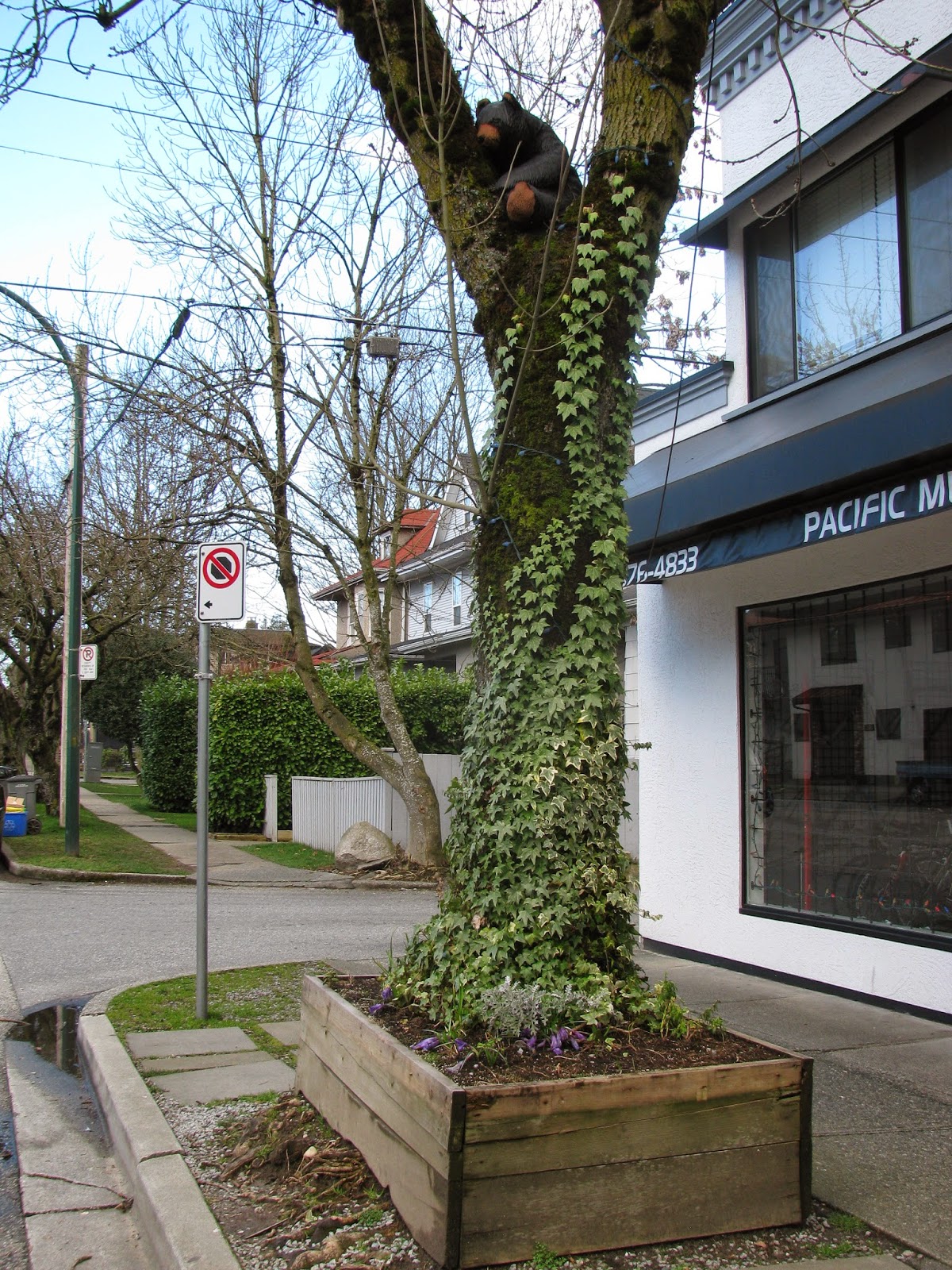This month we celebrated two years since taking possession of The Yellow House. Almost faded from memory now is the gruelling 5-block move from our old place, an epic journey that went on into mid-July. Reflecting from time to time on where we've come from and where we've landed, one or the other of us will say, "Well, it's the best we could have done under the circumstances."
As this spring has shown, there are both old and new pleasures to cheer us on. There are still some surprises coming up in the garden we inherited here. And most of the plants we brought along have put down roots and are thriving, with one exceeding all expectations. Years ago, we brought to Vancouver from our cabin property a small clump of Rosa nutkana, the wild rose of British Columbia. In our old yard of "mixed sun and shade," it produced just a few blossoms. Here, against the sunny western fence of our small front yard, it's tripled in size and has been laden with scented blooms since mid-May.
Another remnant of Cloudburst (the name we gave our cabin, situated below Cloudburst Mountain) has come into its own, a half-finished sculpture called "A Bird in the Hand." It has a story, of course -- the story of my failed attempt to become a sculptor.
Our cabin property was amply supplied with huge cedar trees and lots of windfall, and I thought the giant logs had the makings of some statuesque figures. Coincidentally, as I began to make my plans, we fell into conversation with a logger from the next-door property, and I mentioned that I was planning to carve sculptures. "From what?" he asked. "Yellow cedar," I answered -- modestly proud that I knew the wood of choice for coastal First Nations' traditional carvings. "Where'd you find THAT?" he asked. "All over the place; we've got lots of it," I answered.
Rolling of eyes followed -- as he explained that although the wood might be yellowish, the trees surrounding us were RED cedar...not suitable for carving...and that yellow cedar grows farther north along the coast or higher up in the mountains. What's more -- though he was hardly the type we'd consider a soulmate -- he invited us to his cabin to see his own chainsaw carvings (which were not bad at all) and gave me a one-and-a-half foot high chunk of authentic yellow cedar.
With more realistic plans than I'd had originally, I made a small hand-sized clay maquette (model) as a guide to a larger cedar version to be called "A Bird in the Hand."
Throughout one summer, with chisels and mallet, I worked and worked and worked on that yellow cedar. It was hard, literally hard, and before long I was having trouble with the old shoulder injury I'd acquired years before from an Ontario canoe trip undertaken without adequate conditioning. Before long, I had packed it in.
The barely realized sculpture came home to Vancouver with us to live in a corner of the basement, where I almost abandoned it two years ago. But no-- why not let bird and cedar back into the open air, here at the Yellow House Garden, and let the weather take over where I had left off?
"A Bird in the Hand" has survived two winters now, with a sinuous clematis vine as its backdrop. It looks rather striking when rain darkens its wood or when the afternoon sun casts a shadow from the bird shape onto the curve of the right thumb. It's not a bad companion to nature's own sculptures -- first, the driftwood piece from a Howe Sound kayaking trip:
And second, a truly elegant "wing" of driftwood from the waste wood pile (can you believe it?!) at Kitsilano Beach:--
The Yellow House Garden also features dozens of cherished stones, some of them interestingly sculptural like the title photo above and this one, with mouth wide open:

I was tempted to try sculpting once again with the amply-branched small tree in the back yard (Attention, Friend L: Is this a California lilac?). But topiary with this species turned out to be a mistake. Last fall I trimmed it into five globular shapes, imagining that its spring flowers would shoot off fireworks in all directions -- but the new leaf growth charged rampantly ahead of the flowers, turning it once again into A Small Tree With a Lot of Branches.
No additional sculptures are contemplated. After all, looking down into our front garden, we find that jungles have their own perfect charm.














